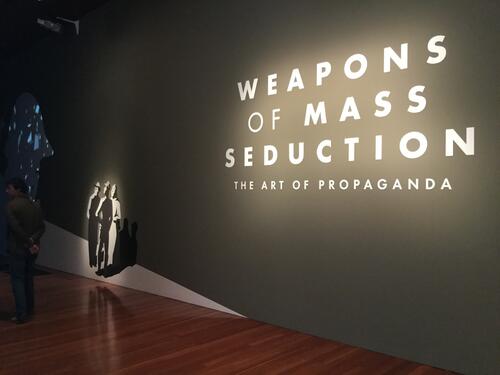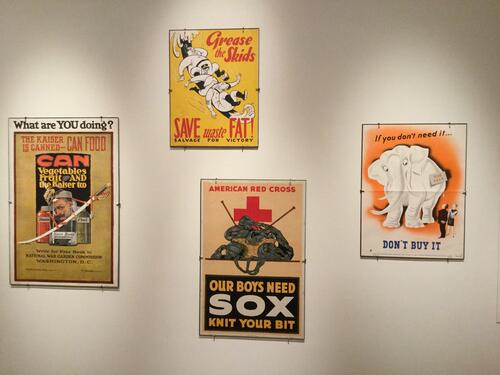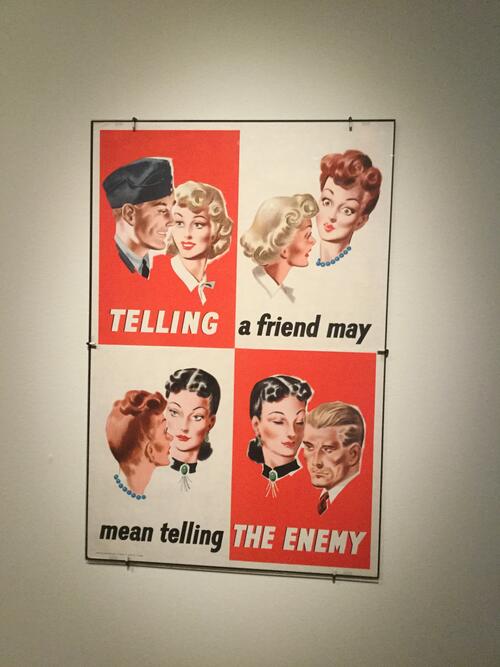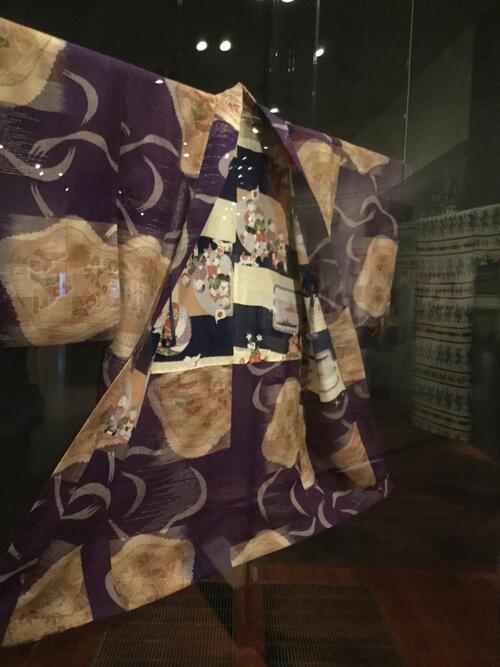
I want YOU...to check out this new exhibit at the de Young. It’s called Weapons of Mass Seduction: the Art of Propaganda (running through October 7th, 2018), featuring WWI and WWII war propaganda posters as well as films, ephemera, and textiles. Mass Seduction is a colorful archive of the more regulated and specialized methods of shaping public opinion that once dominated our lives...a remarkable relic of the past, this notion of highly-controlled information, considering that these days any yo-yo with a twitter account can reach millions in mere seconds.

Aside from its impressive historical value, the art on display has more topical relevance than one might at first assume. “Fake news” aficionados should take note: the same tactics of instilling fear and paranoia, generalization, and easily digestible and often inaccurate content were used then as they are now. But where here they often clutter up our social media channels, in the early 20th century, information was impressed upon the public mainly through art on posters. In many ways, this approach would be the creative impetus for graphic design as we now know it.

Mass Seduction divides up its collection into different sections based off of the art’s intended message: war bonds, food conservation, antagonizing the enemy, scare tactics, and reminding citizens to keep their mouths shut, lest enemy spies discover national secrets.

Sexist undertones notwithstanding
What was perhaps most illuminating were the ten Japanese “propaganda kimonos” on display - a recently uncovered collection of colorful kimonos worn by Japanese citizens of the era displaying military or nationalistic themes and imagery.

While these days literally any icon, opinion, feeling or emoji may be proudly and inexplicably flaunted on the fronts of t-shirts and hats, these kimonos were often worn in private, and many with their symbols embedded on the inside of the robes, only worn among intimate friends and family. Most of the kimonos on display were for children.

“Surprise - I’m pro-war! Don’t tell Mom!”
After getting a guided tour of this fascinating exhibit led by curator Colleen Terry, we were invited to attend a follow-up discussion on the topic of fake news, held by Craig Silverman of Buzzfeed, Laura Sydell of NPR and Craig Newmark of Craigslist to discuss the impact of fake news and how we can combat it.

For those not #woke, “fake news” is a term (with a meaning that is ironically often deliberated) generally referring to the intentional spread of false information to the public for various purposes; ideology, attention, or greed, to name a few. So, like, when you scroll across a post about how Hillary Clinton is a robot who uses her emails to melt her political enemies’ brains, you’re probably encountering some fake news there.

The discussion was interesting, though I felt like we were just barely scraping the surface before it was over. Silverman, Sydell, and Newmark all shared their personal experiences and understandings with quirky presentations and highlighting anecdotes before ending with a public Q&A. Despite a barrage of frantic questions and concerns from many in the audience concerning this wild west state of the internet, Laura and the two Craigs maintained a steady baseline of hope through their somber sighs and facepalms (“You people attending this lecture,” urged Sydell, “you are the reason for optimism!”), along with a few suggestions for what we might do to better keep ourselves informed (“Please download the NPR app,” plugged Newmark).

It was a highly entertaining and insightful discussion, and though none of us, not even our guest lecturers, felt the issue had come even close to being resolved, there was a sense of closure with this message: we are paying attention, we are taking this on, we are making changes. What those changes will be, and how soon they will come, is still TBD. Nevertheless, concerned readers should keep in mind the first step toward progress is remembering where we come from; this is a strong endorsement for Weapons of Mass Seduction, an exhibit which, through its small but absorbing historical catalog of the manipulative and ingenious efforts of another era to induce and sway its public, we can obtain insight into our own times and the potential pitfalls of digital engineering. Less memes, this writer says, more museum trips.









